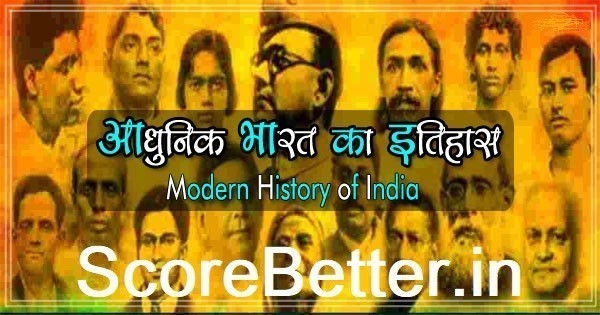The Champaran Satyagraha of 1917 was the first Satyagraha movement led by Mahatma Gandhi in British India and is considered a historically important rebellion in the Indian independence movement.
The Champaran Satyagraha is considered to be a vital event in the history of India’s freedom struggle. It was India’s first civil disobedience movement, launched by Mahatma Gandhi to protest against the injustice meted out to tenant farmers in the Champaran district of Bihar. Let us read in detail about Champaran Satyagraha.
In the early nineteenth century, European planters had involved the cultivators of Champaran, Bihar, in agreements that forced them to cultivate indigo on 3/20 of their holdings. It was known as the tinkathia system.

Historical background of Champaran Satyagraha
Raj Kumar Shukla was not happy with the concession and wanted to change the obnoxious system of agricultural labor prevailing in Champaran. They could not grow the food they needed, nor did they receive adequate payment for the indigo.
It was Ganesh Vidyarthi who had mentioned Gandhi’s work in Africa to Shukla. Brajkishore Prasad and Rajendra Prasad, who were the sympathetic lawyers of Patna, suggested he meet Mohandas Karamchand Gandhi, who was attending the 31st Session of the Congress in Lucknow (held between December 26 and 30, 1916).
Therefore, Raj Kumar Shukla and Sant Raut persuaded Gandhi to go to Champaran, and thus, the Champaran Satyagraha began. Gandhi arrived in Champaran on April 10, 1917, and stayed at the house of Sant raut in Amolwa village with a team of eminent lawyers: Brajkishore Prasad, Rajendra Prasad, Anugrah Narayan Sinha Ramnavmi Prasad, and others, including J. B. Kripalani.

Turning Point of Champaran Satyagraha
German synthetic dyes knocked indigo out of the market at the end of the nineteenth century. As a result, the European Champaran planters desired to relieve the cultivators of their responsibility to cultivate indigo. They also tried to take advantage of their predicament by extorting increases in rent and other unlawful fees in exchange for their release. As early as 1908, there was resistance.
The emergence of Mahatma Gandhi
Since his return from South Africa in 1915, Gandhi has been on a pan-India tour to understand the problems of the masses. In between, Raj Kumar Shukla, a native of Champaran, decided to follow Gandhiji all over the country to persuade him to come to Champaran to investigate the problem.
Raj Kumar Shukla’s decision to get Gandhiji to Champaran is indicative of the image he had acquired as one who fought for the rights of the exploited and the poor.
Gandhiji Defiance
Gandhiji, on reaching Champaran, was ordered by the Commissioner to leave the district immediately. But to the surprise of all concerned, Gandhiji refused and preferred to take the punishment for his defiance.
The Government of India did not want to make an issue of it, so ordered the local Government to retreat and allow Gandhiji to proceed with his inquiry.
Gandhiji and Champaran Satyagraha
Following his victory, Gandhiji began his research into the peasants’ problems. He and his colleagues traveled the villages, recording peasant remarks from dawn to night and interrogating them to ensure that they were providing accurate information. Gandhi’s associates included Brij Kishore, Rajendra Prasad, and other members of the Bihar intelligentsia, as well as Mahadev Desai, Narhari Parikh, two young Gujarati men, and J.B. Kripalani.
The outcome of the Champaran Movement
Meanwhile, the government established a Commission of Inquiry to look into the matter, with Gandhiji as one of its members. He had little trouble persuading the Commission that the tinkathia system needed to be eliminated, thanks to evidence gathered from peasants. Furthermore, the peasants should be paid for the illegitimate increase in their dues.
He agreed to refund only 25% of the money the planters had illegally seized from the peasants as a compromise with them.
In response to critics who questioned why Gandhiji did not request a complete refund, Gandhiji responded that the planters’ prestige and status had already been harmed by the refund.
Gandhi was correct, and the planters departed the territory entirely within a decade.
Importance of Champaran Satyagraha
The Champaran Satyagraha was Gandhiji’s first struggle on Indian soil after a 20-year struggle in South Africa to defend Indian rights.
It is popularly considered the site of Gandhi’s initial satyagraha experiments, which he then reproduced abroad.
The Ahmedabad workers’ protest against indigenous mill owners and the Kheda satyagraha against revenue improvements, both in 1918, were shortly followed by the all-India April satyagraha against the Rowlatt Acts in 1919, and lastly the non-cooperation and Khilafat campaign in 1920-22.
The Champaran Satyagraha is notable for connecting peasant agitation with India’s national movement.
.
Follow on Youtube – Score Better
Join Us on Telegram For More Update
